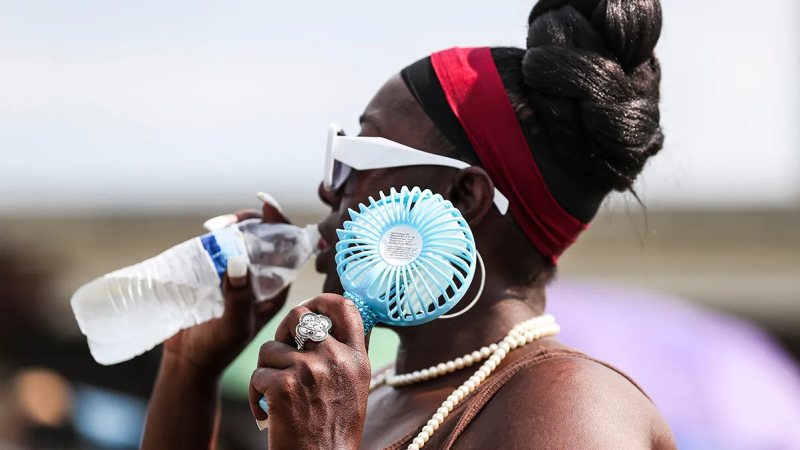Heat waves in the US kill more people in their homes than anywhere else
In July 1999, during Cincinnati’s worst heat wave in recent history, paramedics rushed a man to the hospital after a neighbor found him unresponsive in an attic apartment that had no air conditioning.
It was too late. Doctors declared him dead at the hospital, with a body temperature of 108 degrees. The coroner attributed the cause of death to a brain injury caused by heatstroke.
The Cincinnati man died where most people do during heat waves: his own home.
In the quarter century since his death, thousands more across the United States have suffered similar fates during heat waves like the one now smothering large swaths of the nation. These are preventable deaths, according to the Centers for Disease Control and Prevention, yet they continue to happen because those most at risk often are unable to get the help they need.
Almost half the 3,142 people who died from heat-related ailments in the past 20 years died at home, according to an analysis of National Weather Service data by the Cincinnati Enquirer, part of the USA TODAY Network. Many people who die in heat waves lack air conditioning or have health problems that can turn deadly in extreme heat.

“When the weather gets this extreme, there's a definite risk,” said Tasha Turner-Bicknell, a nurse and associate professor at the University of Cincinnati College of Nursing.
Here’s what the numbers tell us about heat-related deaths in the U.S. – and who’s most susceptible to them.
Most people die of heat inside homes but deaths at outside locations have surged
Unhoused people are especially vulnerable to heat-related deaths, due to their health issues and limited access to cooling centers. And in the past few years, the analysis found, there has been a surge overall in the number of people dying outdoors during heat waves.
But over the past two decades, 45% of people who died at a known location died in their homes, making it the most common location for heat-related deaths.
Outside locations, such as a camp ground or a ball field, were the second most common, making up 41% of deaths. Deaths in cars or other vehicles were next, at 12%, and mobile homes were 2.5%.
Why do people die so often in their own homes? Lack of air conditioning is a factor, said Turner-Bicknell.
“Most of us take for granted that we live and work in air-conditioned environments,” she said. "But we have a lot of members of our community that do not have air conditioning.”
Social isolation may also play a role in heat-related deaths because those living alone may not have anyone checking on them. A study in Rome found a program aimed at decreasing social isolation among people over age 80 was linked to a lower number of deaths during the summer.
Social isolation can be especially dangerous for those with disabilities or mobility-restrictions, according to Turner-Bicknell, who rely on others to leave their homes.
“Maybe they use a walker or a cane or a wheelchair, and maybe their caregivers are not available," she said. "They might be unable to get out of their house without assistance.”
Burned out?Experts say extreme heat causes irritation, stress, worsens mental health
Number of heat deaths may be underestimated
According to the CDC, hotter temperatures raise the risk of heat exhaustion, dehydration, and breathing problems, and those with disabilities and chronic health conditions are especially vulnerable.
Other risk factors for heat-related death or injury include being low-income, being under 5 or over 65 years old.
Heat death rates also vary by race: non-Hispanic Native Americans had the highest rate of heat-related deaths in the country, followed by non-Hispanic Black Americans.
Though scientists say most heat-related deaths are preventable, they also caution that the true impact of heat on Americans' health may be underestimated. They say that's because other causes of death, such as cardiac arrest and stroke, often are not attributed to heat unless it obviously was a factor.
The CDC, for example, estimates the number of heat-related deaths over the past 20 years was over 10,500, more than three times higher than the National Weather Service estimates. And some scientists put the number much higher than that.
Disclaimer: The copyright of this article belongs to the original author. Reposting this article is solely for the purpose of information dissemination and does not constitute any investment advice. If there is any infringement, please contact us immediately. We will make corrections or deletions as necessary. Thank you.



